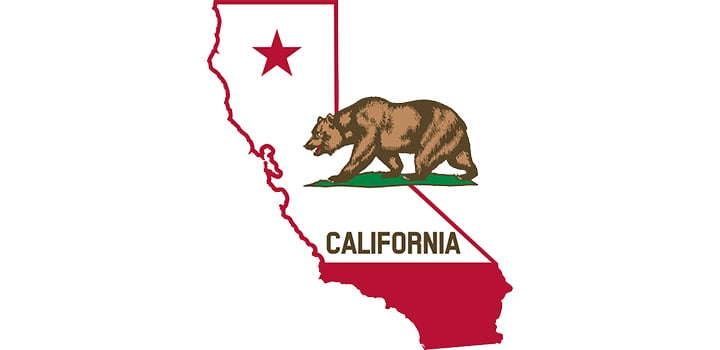
OSHA recently developed a standard for confined spaces in the construction industry (29 CFR 1926 Subpart AA). These spaces can present conditions that are immediately dangerous to your workers’ lives or health if not properly identified, evaluated, tested and controlled. As a result, preparing to respond to an accident in a confined space is just as important as training workers to enter them.
One provision of the standard requires employers to develop and implement procedures for summoning rescue and emergency services in permit-required confined spaces. Any employer who relies on local emergency services for assistance is required to meet the applicable requirements of the OSHA standard.
However, not all rescue services or emergency responders are trained or equipped to conduct rescues in confined spaces. When you identify an off-site rescue service, it is critical that the rescuers can protect your employees. The emergency services should be familiar with the exact site location, the types of permit-required confined spaces and the necessary rescue equipment.
Employer Considerations
Pre-planning for a rescue will ensure that the emergency service is capable, available and prepared to save your workers.
Before the start of any rescue operation, you must evaluate prospective emergency responders, and select one that has the following traits:
- Adequate equipment for rescues, such as the following:
- Atmospheric monitors
- Fall protection
- Extraction equipment
- Self-contained breathing apparatus (SCBA) for the particular permit-required confined space
- The ability to respond and conduct a rescue in a timely manner based on the site conditions, and the capability to conduct a rescue if faced with potential hazards specific to the space. These hazards may include the following:
- Atmospheric hazards
- Electrocution
- Flooding or engulfment
- Poor lighting
- Falls
- Chemical hazards
- The ability to notify you in the event that the rescue team becomes unavailable.
To ensure the safety of your workers, you must take a proactive role in securing the services of emergency responders. This includes finding the most efficient way of contacting emergency responders, conducting a tour of the project site with them and communicating any changes made to the site before a rescue becomes necessary.
Communicating With Emergency Responders
Talking with emergency responders about the hazards they might encounter during a rescue will assist in preparing for the situation. The following are some questions responders should be able to answer when you request their services:
- Are you able to respond and conduct a rescue in a timely manner based on the site conditions?
- Do you have the appropriate equipment for response and rescue?
- Are you prepared for the hazards identified at the project site?
- Are you aware of the exact location of the work site? This includes information on access routes, gates, site plans and GPS coordinates.
- Can you visit the site and hold a practice rescue?
- What is the best way to contact you? How would I communicate any changes to site conditions throughout the project?
- Could other emergencies or group training preclude you from responding, and how will that be communicated?
Additional Resources
Complying with OSHA’s new standard will protect your workers and save you from costly penalties. Contact us today at 831-661-5697; we can provide you with our comprehensive resource, “Permit-required Confined Spaces in Construction Program and Training Materials.”
Read more

Self-driving vehicles may feel like something that will only be available in the distant future, but autonomous technology is already having an impact on the transportation industry. Many motor carriers are promoting new equipment to attract tech-savvy drivers, and advanced safety sensors are helping decrease accidents on the road.
Over 30 automakers and technology companies are working to make trucks fully autonomous, and many states have already passed self-driving legislation that allows for testing on public roads. But, even though this technology offers motor carriers a way to increase efficiency and improve safety, there are a number of topics your business needs to consider before adopting self-driving trucks.
The Different Levels of Automation
Most of the technology used in autonomous vehicles is an evolution of common safety features that use vehicle-mounted cameras and sensors, such as automatic brakes, lane departure systems and blind spot alerts. However, self-driving technology takes this concept a step further by having these systems work together to perform some or all driving functions.
Because there are multiple self-driving systems in development that offer different levels of autonomy, most companies use a system developed by SAE International to classify levels of autonomous vehicles. Levels 0-2 mainly define limited control systems that are commonly available in consumer and commercial vehicles:
- Level 0: No automation – The driver performs all driving tasks, but automated system issue warnings may be present.
- Level 1: Driver assistance – The vehicle and driver may share control in limited circumstances, such as adaptive cruise control and parking assistance. However, the driver must be ready to retake control at all times.
- Level 2: Partial automation – The vehicle has combined automatic functions (such as controlling acceleration and steering simultaneously), but the driver must be constantly engaged and aware of the surrounding environment.
Levels 3-5 define vehicles that are commonly referred to as autonomous or self-driving:
- Level 3: Conditional automation – A driver must still be present, but doesn’t have to monitor the environment. However, they must be ready to take control at all times and with no notice.
- Level 4: High automation – The vehicle can perform all driving functions under certain conditions, and switching control back to the driver may be optional.
- Level 5: Full automation – The vehicle can perform all driving functions at all times.
How Can Self-driving Trucks Help Carriers?
Self-driving trucks could help motor carriers address a number of common issues:
- Safety – Properly functioning self-driving systems operate without the chance of human error and can react to changing traffic patterns faster than a regular driver.
- Driver shortage – Regulations likely won’t allow vehicles to operate without a driver in the near future. However, the technology will attract applicants who don’t want to spend long stretches of time in full control of a commercial truck.
- Increased efficiency – Autonomous technology can give carriers real-time information on location, maintenance status and traffic patterns in order to increase efficiency and better manage fleets.
- Cost reductions – Motor carriers can reduce costs by sending autonomous trucks on more fuel-efficient routes or by platooning the vehicles together to reduce air drag.
What Risks Does This Technology Present?
Although autonomous technology is advancing rapidly, there are still a number of risks and obstacles to overcome before the vehicles can be widely adopted:
- Public perception – Advanced sensors generally make self-driving trucks safe, but recent high-profile collisions and fatalities during tests have lowered the public’s opinion of the technology.
- Long-term employment – Autonomous technology will help to attract new drivers in the near future, but some experts believe that fully independent vehicles may someday eliminate millions of jobs.
- Liability – The liability of an accident involving human-driven vehicles is fairly easy to judge. However, self-driving trucks bring a nonhuman factor into the equation that makes it difficult to determine if an operator, technology developer, manufacturer or other party is at fault for an accident.
- Compliance – Individual states, cities and jurisdictions currently manage laws regarding the testing and use of self-driving trucks, making interstate commerce more complicated. However, the FMCSA recently requested feedback on the regulations that would have to be updated, modified or eliminated to safely allow for the use of autonomous vehicles. Key questions discussed by the agency include the following:
- How will motor carriers ensure automatic systems are functioning properly?
- What changes, if any, should be made to distracted driving regulations?
- How will enforcement officials determine a vehicle’s SAE classification level, and would easily identifiable classification signage negatively affect other drivers?
- How should a driver’s hours of service be recorded when using an automated driving system?
Considering Your Options
As self-driving vehicles continue to develop, your business should carefully consider how both the advantages and risks of this new technology will impact its operations. Contact us at 831-661-5697 today for help analyzing your unique risk exposures.
Read more

Ticks and Lyme Disease
Lyme disease is a bacterium that’s often carried by mice and other small rodents. The disease can be transmitted to humans if they’re bitten by a tick that previously fed off an infected animal.
Different types of ticks live in the United States and while some can transmit diseases, others are only a nuisance. In general, infected blacklegged ticks can transmit the bacterium that causes Lyme disease.
Symptoms of Lyme disease typically develop within two weeks of a tick bite and can include fevers, chills, swollen lymph nodes, neck stiffness, fatigue, headaches, and joint or muscle aches.
To avoid contracting Lyme disease, do the following:
- Wear light-colored clothing, including long-sleeved shirts and pants when in wooded areas. Tuck pant legs into socks or boots and keep long hair tied back.
- Wash your body and clothing after all outdoor activities.
- Look periodically for ticks if you’ve been outdoors, especially if you’ve been in wooded areas or gardens.
- Remove ticks within 24 hours to greatly reduce the risk of contracting Lyme disease.
- Check your pet’s coat if it’s been in an area known for ticks.
Remember to consult your health care provider as soon as you experience Lyme disease symptoms. If possible, send any ticks that you’ve removed to a public health laboratory in your area. Click here to learn more.
Keeping Mold Out of the Home
A mold problem in the home can cause serious health effects, especially for young children, the elderly, those who suffer from allergies or asthma, and those with prior respiratory conditions. Mold can cause eye irritation, nasal stuffiness, shortness of breath, wheezing and infections in the lungs.
Though most molds grow outdoors, they can get inside a home through open windows and doors, air conditioning systems, pets, clothing and shoes. Try these prevention tips to keep mold out of your home:
- Clean up any water damage or flooding thoroughly and immediately.
- Use a dehumidifier and a wet-dry vacuum to remove water quickly.
- Remove carpeting that can’t be dried out within 48 hours. If your carpet was contaminated by sewer water or a flood, it needs to be replaced.
- Repair basement cracks so that moisture can’t seep in.
- Use a dehumidifier or air conditioner to reduce indoor moisture, especially during humid months. Empty the drip pans in your air conditioner, refrigerator and dehumidifier on a regular basis to prevent water buildup.
- Fix plumbing leaks immediately. Mold will begin to grow within 24 to 48 hours after a leak forms.
Protecting Your Vehicle from Hail
Hail can strike anywhere and at any time, causing major damage to your vehicle. When a hailstorm occurs, take the following precautions to keep you and your vehicle safe:
- Don’t get out of your vehicle if you’re driving during a hailstorm. If you can pull over to the side of the road, do so safely.
- Park your car on an angle so that the hail hits the front of your car. This protects your side and rear windows, which aren’t made of reinforced glass.
- Find covered parking to protect your car, like a parking garage or awning. If you live in a hailstorm-prone area, it may be a good idea to purchase or build a covered parking solution for your home, like a metal canopy or garage.
- Use blankets or a hail car cover. These items can be very effective in protecting vehicles from damage, especially if you’re far away from shelter.
- Locate a body shop that you trust to make any necessary repairs. Discuss the extent of the damage with the body shop and your insurance broker.
Hotel Safety Tips
Hotels provide a home away from home whenever you travel. However, hotels aren’t always safe, and vacationers are at risk of things like break-ins, fires and natural disasters.
The following are some general hotel safety tips to keep in mind to protect yourself from a variety of risks:
- Check reviews for security concerns. Guest reviews can provide information on the area’s crime level and steps the hotel takes to protect guests.
- Use hotels that restrict access to guest floors.
- Check your room lock to confirm it’s working properly. Make sure that the door has a deadbolt and keep it locked whenever you’re in the room.
- Lock away valuable items you won’t be carrying with you in the room’s safe. This can include things like money, jewelry, laptops or other electronics.
- Be wary of people that come to the door claiming to be hotel staff.
Read more

STATE RESOURCES
California Department of Industrial Relations
www.dir.ca.gov/dlse/dlse
WagesAndHours.html
Publications
The DIR has published the following materials regarding wage and hour laws in the state:
Poster
Employers can use this DIR model poster to satisfy their posting requirements.
On April 30, 2018, the California Supreme Court adopted a new test for classifying workers as independent contractors for purposes of the California wage orders. In Dynamex Operations West, Inc. v. Superior Court, the Supreme Court ruled that employers must use a three-part “ABC test” to establish whether a worker may be properly classified as an independent contractor for this purpose.
Worker Classification
Whether a worker is covered by a particular law or is entitled to receive a particular benefit often depends on whether the worker is an employee or an independent contractor. In general, employment laws, labor laws and related tax laws do not apply to independent contractors.
For purposes of federal labor and employment laws, no standard test has emerged to determine the true character of an independent contractor relationship. In fact, employers may have to apply various tests to determine how issues of employment benefits, workers’ compensation, unemployment compensation, wage and hour laws, taxes or protection under Title VII of the Civil Rights Act, the American with Disabilities Act (ADA), and the Family and Medical Leave Act (FMLA) affect their workforces.
In addition, employers should be aware that state and local variations of these tests may apply in certain situations.
California Wage Orders
Several federal laws regulate wage and hour requirements. California law also imposes state wage and hour requirements. When federal and state laws are different, the law that is more favorable to the employee will apply.
The Industrial Welfare Commission (IWC), part of the California Department of Industrial Relations (DIR), established wage orders to enforce and administer California’s wage and hour requirements throughout the state. Because the IWC is no longer in operation, the Division of Labor Standards Enforcement (DLSE) currently enforces the wage orders.
In total, there are 17 California wage orders, plus a minimum wage order, that California employers must comply with. Each wage order covers a separate industry and imposes requirements relating to minimum wages, work hours and basic working conditions (such as meal and rest periods) for California employees.
Overview of Dynamex v. Superior Court
In Dynamex v. Superior Court, the California Supreme Court was asked to determine what standard applies under California law for purposes of determining whether workers should be classified as employees or as independent contractors under the California wage orders. In this case, a group of delivery drivers sued their employer, Dynamex, arguing that the drivers had been misclassified as independent contractors, rather than employees. The delivery drivers claimed that, due to this misclassification, Dynamex violated Wage Order No. 9 (the applicable order governing the transportation industry), as well as various sections of the California Labor Code.
Prior to 2004, drivers working for Dynamex who performed similar pickup and delivery work as the current drivers were classified as employees. In 2004, however, Dynamex adopted a new policy and contractual arrangement under which all drivers are considered independent contractors, rather than employees. Dynamex argued that, in light of the current contractual arrangement, the drivers are properly classified as independent contractors.
The Supreme Court’s ruling—The “ABC Test”
Historically, courts have applied a multifactor balancing test in determining whether a worker is an employee or an independent contractor. However, the California Supreme Court abandoned the traditional balancing test, and instead adopted a new three-part test that California employers must use when determining whether a worker can be classified as an independent contractor for purposes of the wage orders.
This three-part test is commonly referred to as the “ABC test” due to its three factors to consider. Under this test, a worker is properly considered an independent contractor to whom a wage order does not apply only if the employer establishes that all of the following are true:
- That the worker is free from the control and direction of the employer in connection with the performance of the work, both under the contract for the performance of the work and in fact;
- That the worker performs work that is outside the usual course of the employer’s business; and
- That the worker is customarily engaged in an independently established trade, occupation or business of the same nature as the work performed for the employer.
This test generally favors a determination that workers are employees, rather than independent contractors. The ABC test presumes that all workers are employees and allows workers to be classified as independent contractors only if the employer demonstrates that the worker in question satisfies each of the three conditions.
Impact on Employers
Employers that employ independent contractors in California will want to ensure that their workers are properly classified under the new ABC test adopted by this ruling. As a result, these employers should review their employment relationships and contractual arrangements to evaluate the impact that this ruling may have on their business.
Employers in California should also keep in mind that this ruling applies for purposes of the California wage orders only. Other existing worker classification tests continue to apply for federal law purposes.
More Information
Contact Scurich Insurance for more information on wage and hour laws in California.
Read more

Why is job safety and health important?
In 2013, 4,585 employees died from occupational incidents, and there were a staggering 3.0 million total recordable cases of workplace injury and illness. On average, each of these 3.0 million cases required eight days away from work, which means U.S. employers as a whole paid for millions of days of lost work time. Experts estimate that workplace injuries and illnesses cost U.S. businesses more than $125 billion annually. Effective job safety and health programs not only help reduce worker injuries and illnesses, they save employers money in the long run.
How does OSHA contribute to job safety and health?
The primary goal of the Occupational Safety and Health Administration (OSHA) is to carry out the Occupational Safety and Health Act (OSH Act), which Congress originally passed in 1970. The OSH Act has undergone several amendments and revisions since its inception, but it is still in place “to assure so far as possible every working man and woman in the Nation safe and healthful working conditions and to preserve our human resources.” OSHA contributes to job safety and health by enacting regulations that forward this ideal.
Title 29 of the Code of Federal Regulations (CFR), Parts 1902-1990, houses all the OSHA standards, though OSHA also allows states to enact occupational safety and health laws of their own under federally-approved plans. State-run programs are at least as strict, and sometimes more so, than federal standards. This ensures a minimum standard of job safety and health that all employers must follow to protect employees.
Are all employees covered by the OSH Act?
The OSH Act covers all employees except public employees in state and local governments and those who are self-employed. Public employees in state and local governments are covered by their state’s OSHA-approved plan, if applicable.Federal employees are covered under the OSH Act’s federal employee occupational safety and health programs, which are outlined in 29 CFR Part 1960.
United States Postal Service employees, however, are subject to the same OSH Act coverage provisions as those in the private sector.Other federal agencies that have issued requirements affecting job safety or health include the Mine Safety and Health Administration (MSHA) and some agencies of the Department of Transportation (DOT), including the Federal Motor Carrier Safety Administration (FMCSA).
Employees in these industries are subject to their respective regulations.Additionally, businesses in the retail, service, finance, insurance and real estate sectors that are classified as low-hazard are exempt from most OSHA requirements, as are small businesses with 10 or fewer employees. Exceptions are discussed in 29 CFR Part 1904, which also explains which OSHA regulations exempt employers are still required to follow.
What are your responsibilities as an employer?
If you are an employer covered by the OSH Act, you must provide your employees with jobs and a place of employment free from recognized hazards that are causing, or are likely to cause, death or serious physical harm. You must also comply with the OSHA statutory requirements, standards and regulations that require you to:
- Provide well-maintained tools and equipment, including appropriate personal protective equipment (PPE)
- Provide medical assistance and guidance for employees sustaining workplace injuries/illnesses
- Provide required OSHA training
- Report accidents that result in fatalities to OSHA within eight hours
- Report accidents that result in the hospitalization of three or more employees to OSHA within eight hours
- Keep records of work-related accidents, injuries, illnesses and their causes
- Post annual injury/illness summaries for the required period of time
What are your rights as an employer?
When working with OSHA, you may do the following:
- Request identification from OSHA compliance officers
- Request an inspection warrant
- Receive a reason for inspection from compliance officers
- Have an opening and closing conference with compliance officers
- Accompany compliance officers on inspections
- Request an informal conference after an inspection
- File a notice of contest to citations or proposed penalties
- Apply for a variance from a standard’s requirements under certain circumstances
- Be assured of the confidentiality of trade secrets
- Submit a written request to the National Institute for Occupational Safety and Health (NIOSH) for information on potentially toxic substances in your workplace
What are employees’ responsibilities?
All employees are obligated to help prevent exposure to workplace safety and health hazards by becoming familiar with and adhering to all applicable OSHA requirements.
What are employees’ rights?
With regards to OSHA regulations, employees have the right, among other actions, to:
- Review employer-provided OSHA standards, regulations and requirements
- Request information from the employer on emergency procedures
- Receive adequate, OSHA-required safety and health training on toxic substances and emergency action plan(s)
- Ask the OSHA area director to investigate hazardous conditions or violations of standards in the workplace
- Have his or her name withheld from the employer when filing a complaint with OSHA
- Know what actions OSHA took as a result of the employee’s complaint and have an informal review of any decision not to inspect or issue a citation
- Have an employee representative accompany the OSHA compliance officer on inspections
- Observe monitoring and measuring of toxic substances or harmful physical agents and review related records (including medical records)
- Review the Log of Work-Related Injuries and Illnesses (OSHA 300 Form), if applicable, at a reasonable time
- Request a closing discussion following an inspection
- Object a citation’s set abatement period
- Seek safe and healthful working conditions without your employer retaliation
Why is OSHA important to your business?
OSHA plays a key role in making your facility a safe, healthy place to work. Beyond providing the tools and guidance to work toward an injury- and illness-free workplace, OSHA is important in identifying businesses that are not committed to safety. Employers that do not carefully follow OSHA regulations often face hundreds of thousands, if not millions, of dollars in fines.
How can you get more information on safety and health?
OSHA provides free publications, standards, technical assistance and compliance tools to help you understand the nuances of the regulations. OSHA’s website also offers extensive assistance by way of workplace consultation, voluntary protection programs, grants, strategic partnerships, state plans, training and education to guide you in your quest for workplace safety. To learn more about OSHA and the critical elements of a successful safety and health management system in your workplace, visit www.osha.gov.
This document is an introductory guideline. It does not address all potential compliance issues with OSHA standards. It is not meant to be exhaustive or construed as legal advice. Contact your licensed commercial property and casualty representative at Scurich Insurance or legal counsel to address applicable compliance requirements. © 2009-2012, 2015 Zywave, Inc. All rights reserved.
Read more

Your commercial insurance policies protect your business, making your insurance agent an essential resource for your company. While you may not have your agent on speed dial, you will want to contact him or her in several circumstances.
Verify Coverage Details
You can purchase a variety of different policies for your business, and need to understand your exact coverage. Contact your insurance agent to verify which types of coverage you have and your policy limits.
Update Your Policy
When you add a vehicle to your commercial fleet, sell a piece of equipment, move to a new location, or make other changes to your business operations, call your insurance agent. These updates could affect your insurance needs, policy and premium.
File A Claim
If you need to file an insurance claim, contact your agent immediately. You may call the agent’s office, send an email or text, or fill out an online claim form on the company’s website. Remember to submit pictures, too, as you get your claim process started.
Ask Questions About a Claim
After you file an insurance claim, you may have questions about the adjuster’s findings or the settlement timeline. Feel free to contact your agent and ask any questions you may have.
Discuss Your Bill
Whether you pay your insurance bill annually, semi-annually or quarterly, you may inspect your bill and realize that you have questions about one of the charges or fees. Most insurance agents remain transparent about billing, and they can explain anything you don’t understand about your insurance charges, fees or payment date.
Pay Your Bill
If you experience any issues when you pay your insurance bill, call your agent. You may also ask for a change in the policy due date or a change in payment frequency.
Initiate an Annual Review
You should receive a notice a few weeks before your commercial insurance policy’s renewal date. Ask your agent for a meeting to renew your coverage. During this meeting, discuss details about your business and the types of insurance you need, including coverage limits and cost, as you verify that you have the right insurance for your needs.
Request a New Quote
Based on your insurance policies you purchase and your loyalty to your commercial insurance company, you may qualify for discounts or a more competitive rate. Your agent can rework your coverage limits, check for discounts and give you a new quote that meets your budget.
Throughout the year, you may wish to contact your commercial insurance agent for several reasons. Always feel free to reach out and discuss your needs as you purchase the right coverage for your business.
Read more






